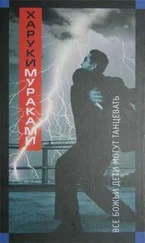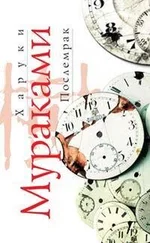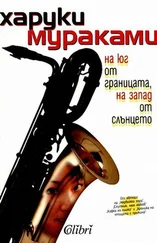Харуки Мураками - First Person Singular - Stories
Здесь есть возможность читать онлайн «Харуки Мураками - First Person Singular - Stories» весь текст электронной книги совершенно бесплатно (целиком полную версию без сокращений). В некоторых случаях можно слушать аудио, скачать через торрент в формате fb2 и присутствует краткое содержание. Город: New York, Год выпуска: 2021, ISBN: 2021, Издательство: Alfred A. Knopf, Жанр: Современная проза, на английском языке. Описание произведения, (предисловие) а так же отзывы посетителей доступны на портале библиотеки ЛибКат.
- Название:First Person Singular: Stories
- Автор:
- Издательство:Alfred A. Knopf
- Жанр:
- Год:2021
- Город:New York
- ISBN:978-0-59331-807-2
- Рейтинг книги:3 / 5. Голосов: 1
-
Избранное:Добавить в избранное
- Отзывы:
-
Ваша оценка:
- 60
- 1
- 2
- 3
- 4
- 5
First Person Singular: Stories: краткое содержание, описание и аннотация
Предлагаем к чтению аннотацию, описание, краткое содержание или предисловие (зависит от того, что написал сам автор книги «First Person Singular: Stories»). Если вы не нашли необходимую информацию о книге — напишите в комментариях, мы постараемся отыскать её.
First Person Singular: Stories — читать онлайн бесплатно полную книгу (весь текст) целиком
Ниже представлен текст книги, разбитый по страницам. Система сохранения места последней прочитанной страницы, позволяет с удобством читать онлайн бесплатно книгу «First Person Singular: Stories», без необходимости каждый раз заново искать на чём Вы остановились. Поставьте закладку, и сможете в любой момент перейти на страницу, на которой закончили чтение.
Интервал:
Закладка:
Had she vanished, like smoke? Or, on that early-autumn afternoon, had I seen not a real person but a vision of some kind? Perhaps I had idealized her in my mind at the instant that we passed each other, to the point where even if I actually saw her again I wouldn’t recognize her? (I think the last possibility is the most likely.)
Later, I got to know a few women, and went out with them. And every time I met a new woman it felt as though I were unconsciously longing to relive that dazzling moment I’d experienced in a dim school hallway back in the fall of 1964. That silent, insistent thrill in my heart, the breathless feeling in my chest, the bell ringing gently in my ears.
Sometimes I was able to recapture this feeling, at other times not. (Unfortunately, the bell didn’t ring enough.) And other times I managed to grab hold of it, only to let it slip through my fingers. In any event, the emotions that surged when this happened came to serve as a kind of gauge I used to measure the intensity of my yearning.
When I couldn’t get that sensation in the real world, I would quietly let my memory of those feelings awaken inside me. In this way, memory became one of my most valued emotional tools, a means of survival, even. Like a warm kitten, softly curled inside an oversized coat pocket, fast asleep.
On to the Beatles.
A year before I saw that girl was when the Beatles first became wildly popular. By April of 1964, they’d captured the top five spots on the American singles charts. Pop music had never seen anything like Beatlemania. These were the five hit songs: (1) “Can’t Buy Me Love”; (2) “Twist and Shout”; (3) “She Loves You”; (4) “I Want to Hold Your Hand”; (5) “Please Please Me.” The single “Can’t Buy Me Love” alone had more than two million preorders, making it double platinum before the actual record went on sale.
The Beatles were, of course, also hugely popular in Japan. Turn on the radio and chances were you’d hear one of their songs. I liked their songs myself and knew all their hits. Ask me to sing them, and I could. At home when I was studying (or pretending to study), most of the time I had the radio blasting away. But, truth be told, I was never a fervent Beatles fan. I never actively sought out their songs. For me, it was passive listening, pop music flowing out of the tiny speakers of my Panasonic transistor radio, in one ear and out the other, barely registering. Background music for my adolescence. Musical wallpaper.
In high school and in college, I didn’t buy a single Beatles record. I was much more into jazz and classical music, and that was what I listened to when I wanted to focus on music. I saved up to buy jazz records, requested tunes by Miles Davis and Thelonious Monk at jazz bars, and went to classical music concerts. It was only much later that I bought my first Beatles record and seriously listened to their music. But that’s a story for another time.
THIS MIGHT SEEM STRANGE, but it wasn’t until I was in my mid-thirties that I sat down and listened to With the Beatles from beginning to end. Despite the fact that the image of the girl carrying that LP in the hallway of our high school had never left me, for the longest time I didn’t feel like actually giving it a listen. I wasn’t particularly interested in knowing what sort of music was etched into the grooves of the vinyl disk she had clutched so tightly.
When I was in my mid-thirties, well past childhood and adolescence, my first impression of the album was that it wasn’t that great, or at least not the kind of music to take your breath away. Of the fourteen tracks on the album, six were covers of other artists’ works. The covers of the Marvelettes’ “Please Mr. Postman” and Chuck Berry’s “Roll Over Beethoven” were well done, and impress me even when I listen to them now, but, still, they were cover versions. And of the eight original songs, apart from Paul’s “All My Loving,” none were amazing. There were no hit singles, and while I applaud their enterprising spirit in putting out albums that included only new material and no recycled singles, to my ears the Beatles’ first album, Please Please Me , recorded basically in one take, was more vibrant and compelling. Even so, likely thanks to Beatles fans’ unquenchable desire for new songs, this second album debuted in the number one spot in the U.K., a position it held for twenty-one weeks. (In the U.S., the title of the album was changed to Meet the Beatles , and included some different tracks, though the cover design stayed almost the same.) What probably accounted for this phenomenal success was their fans’ passionate desire—like travelers’ thirst for water after traversing a desert—for a fresh supply of Beatles music, plus the memorable monochrome cover photo, in half shadow, of the four of them.
What pulled me in was the vision of that girl clutching the album as if it were something priceless. Take away the photograph on the album cover and the scene might not have bewitched me as it did. There was the music, for sure. But there was something else, something far bigger. And, in an instant, that tableau was etched in my heart—a kind of spiritual landscape that could be found only there, at a set age, in a set place, and at a set moment in time.
For me, the major event of the following year, 1965, wasn’t President Johnson ordering the bombing of North Vietnam and the escalation of the war, or the discovery of a new species of wildcat on the island of Iriomote, but the fact that I acquired a girlfriend. She had been in the same class as me in freshman year, but it wasn’t until sophomore year that we started going out.
To avoid any misunderstanding, I’d like to preface this by saying that I’m not good-looking and was never a star athlete, and my grades in school were less than stellar. My singing left something to be desired, too, and I didn’t have a way with words. When I was in school, and in the years after that, I never once had girls flocking around me. That’s one of the few things I can say with certainty in this uncertain life. Still, there always seemed to be a girl around who was, for whatever reason, attracted to me. I have no clue why, but I was able to enjoy some pleasant, intimate times with those girls. I got to be good friends with some of them, and occasionally took it to the next level. The girl I’m talking about here was one of these—the first girl I had a really close relationship with.
This first girlfriend of mine was petite and charming. That summer, I went on dates with her once a week. One afternoon I kissed her small yet full lips and touched her breasts through her bra. She was wearing a sleeveless white dress and her hair had a citrusy shampoo scent.
She had almost no interest in the Beatles. She wasn’t into jazz, either. What she liked to listen to was more mellow music, what you might call middle-class music—the Mantovani Orchestra, Percy Faith, Roger Williams, Andy Williams, Nat King Cole, and the like. (At the time, middle class wasn’t a derogatory term at all.) There were piles of such records at her house—what nowadays is classified as easy listening.
That afternoon, she put a record on the turntable in her living room—her family had a large, impressive stereo system—and we sat on the big, comfy sofa and kissed. Her family had gone out somewhere, and it was just the two of us. Truthfully, in a situation like that I didn’t really care what sort of music was playing.
What I remember about the summer of 1965 was her white dress, the citrusy scent of her shampoo, the formidable feel of her wire bra (a bra back then was more like a fortress than like an item of underwear), and the elegant performance of Max Steiner’s “Theme from A Summer Place ” by the Percy Faith Orchestra. Even now, whenever I hear “Theme from A Summer Place ,” that large, comfy sofa comes to mind.
Читать дальшеИнтервал:
Закладка:
Похожие книги на «First Person Singular: Stories»
Представляем Вашему вниманию похожие книги на «First Person Singular: Stories» списком для выбора. Мы отобрали схожую по названию и смыслу литературу в надежде предоставить читателям больше вариантов отыскать новые, интересные, ещё непрочитанные произведения.
Обсуждение, отзывы о книге «First Person Singular: Stories» и просто собственные мнения читателей. Оставьте ваши комментарии, напишите, что Вы думаете о произведении, его смысле или главных героях. Укажите что конкретно понравилось, а что нет, и почему Вы так считаете.











